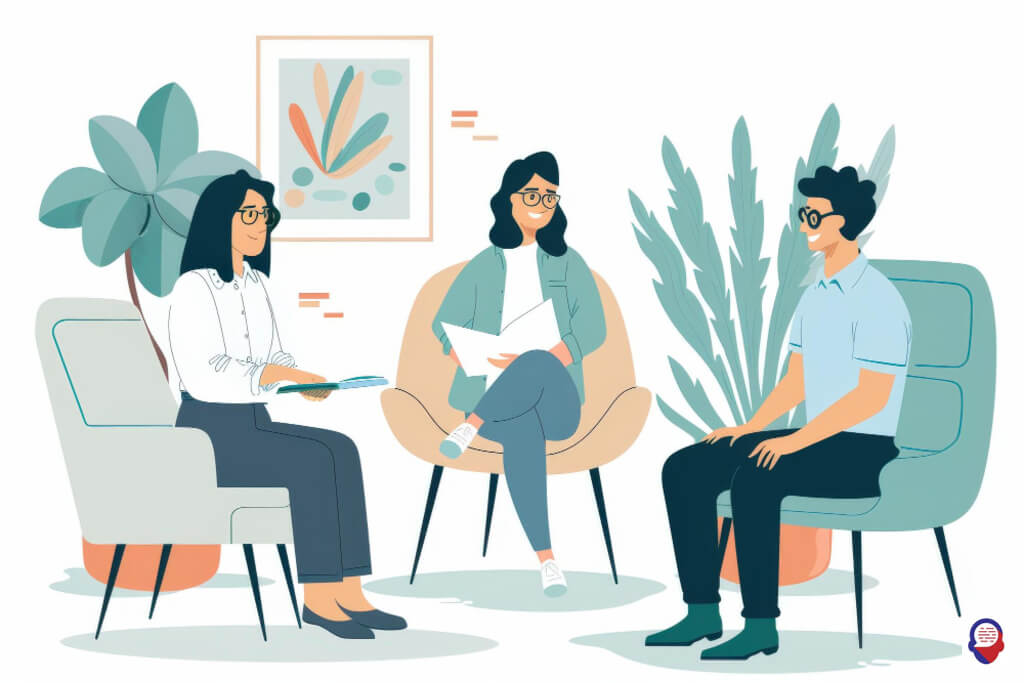Healing from Trauma: Your Guide to CBT for PTSD
Living with the aftermath of trauma can feel like being trapped in a storm. The world, once a place of relative safety, can suddenly seem fraught with danger. Memories may ambush you without warning, sounds can trigger intense fear, and the simple act of relaxing might feel impossible. This is the isolating reality of Post-Traumatic Stress Disorder, or PTSD. But within this storm, there is a proven, powerful, and deeply empowering path toward calmer shores. That path is Cognitive Behavioral Therapy.
This article is a comprehensive guide to understanding how CBT works for PTSD. It is not just about theory, it is about a practical, structured, and compassionate approach to healing. We will explore what this therapy is, how it untangles the knots of trauma, what you can expect from the process, and how it helps you reclaim your life, one step at a time. The journey out of trauma is real, and for many, it begins with the skills and insights gained through CBT.

What Exactly Is Post-Traumatic Stress Disorder?
Post-Traumatic Stress Disorder is a mental health condition that can develop after a person experiences or witnesses a terrifying, life-threatening, or deeply distressing event. It is the mind and body’s attempt to cope with an overwhelming experience, an alarm system that, instead of shutting off, has become stuck in the ‘on’ position.
PTSD is not a sign of weakness, rather, it is a understandable human response to an abnormal situation. The brain struggles to process the event, leaving the memory "unfiled" and raw. This leads to a collection of symptoms that can disrupt every facet of a person’s life. These symptoms typically fall into four main categories.
First is intrusion, where the trauma forces its way back into your present through unwanted flashbacks, vivid nightmares, or distressing thoughts. Second is avoidance, a powerful urge to stay away from anything, whether people, places, or activities, that reminds you of the trauma. Third are negative changes in thoughts and mood, which can include persistent feelings of fear, anger, guilt, or shame, a loss of interest in once-loved activities, and distorted beliefs about yourself or the world. Finally, there are changes in arousal and reactivity, such as being easily startled, feeling constantly on edge, having angry outbursts, or struggling with sleep and concentration.

How Can Cognitive Behavioral Therapy Help With PTSD?
Cognitive Behavioral Therapy, or CBT, helps you heal from PTSD by directly addressing the unhelpful thinking patterns and behaviors that keep you trapped in the cycle of trauma. It operates on the fundamental principle that our thoughts, emotions, and actions are all interconnected and powerfully influence one another.
After a traumatic event, this intricate system can become distorted. A thought about the trauma can trigger intense fear, which in turn leads to a behavior, like avoiding a specific place. This avoidance provides temporary relief, reinforcing the belief that the place is dangerous and making the fear even stronger the next time. CBT provides a structured roadmap to interrupt this vicious cycle.
It is an active, skills-based therapy where you work collaboratively with a therapist. It is not about simply talking endlessly about the past. Instead, it is about learning practical tools in the present to change how the past affects you. By learning to identify and challenge trauma-related thoughts and to gradually face what you have been avoiding, CBT empowers you to recalibrate your internal alarm system and find a new sense of safety and control.

What is the “Cognitive” Part of CBT?
The "cognitive" component of CBT focuses on identifying, examining, and changing the distressing thoughts, beliefs, and interpretations that took root after the traumatic event. It is a process of learning to see your thoughts as what they are, just thoughts, not indisputable facts, and then assessing them for accuracy and helpfulness.
Trauma can fundamentally alter the way we see ourselves, other people, and the world. It can create powerful, negative beliefs often referred to as "stuck points." These might sound like "The world is completely dangerous," "I am to blame for what happened," or "I am permanently damaged." These thoughts, while understandable, generate intense emotional pain and keep the trauma alive.
The work of cognitive therapy involves becoming a detective of your own thoughts. With your therapist’s guidance, you learn to notice these stuck points and challenge them using evidence and logic. The goal isn’t to force yourself into "positive thinking," but to develop a more balanced, realistic, and compassionate perspective. This process, known as cognitive restructuring, helps to loosen the grip of guilt, shame, and fear, creating mental space for healing to occur.

What is the “Behavioral” Part of CBT?
The "behavioral" element of CBT involves methodically and safely confronting the memories, situations, and feelings that you have been avoiding since the trauma. This is a crucial step, because while avoidance feels protective in the short term, it is the very thing that maintains and strengthens fear over the long term.
This component of therapy is often called exposure therapy. It is based on the idea that to overcome a fear, you must face it. By avoiding reminders of the trauma, you never give your brain the chance to learn that you can handle the distress, or that the feared catastrophic outcome will not happen. Avoidance essentially tells your brain, "See? I avoided that, and I stayed safe. That thing must be truly dangerous."
In a controlled and supportive therapeutic environment, you will gradually face these avoided triggers. This might mean talking about the traumatic memory or visiting a place you have been staying away from. This is always done at a pace that feels manageable for you. Through this process of exposure, your brain learns new, vital information. It learns that the memory itself is not harmful and that the anxiety you feel, while uncomfortable, will naturally decrease on its own over time. This helps to re-establish a sense of safety and confidence in the world.

What Are the Main Types of CBT for PTSD?
There are several highly effective, specialized forms of CBT that have been developed and researched specifically for treating PTSD. The main, evidence-based approaches include Prolonged Exposure (PE), Cognitive Processing Therapy (CPT), and Stress Inoculation Training (SIT), each offering a unique pathway to recovery.
While all of these therapies share the core principles of CBT, they place different emphasis on the cognitive and behavioral components. The choice of which therapy is best often depends on the specific nature of your symptoms, your personal preferences, and the collaborative decision you make with your therapist. Understanding these different models can help you feel more informed and empowered as you consider seeking help.

How Does Prolonged Exposure (PE) Therapy Work?
Prolonged Exposure therapy is a highly effective treatment that helps you to gradually and systematically approach trauma-related memories, feelings, and situations. The core idea behind PE is that the avoidance of these things is what keeps PTSD going, and by facing them, you can reduce their power over you.
PE has two primary components. The first is called imaginal exposure. In the safety of the therapy session, you will be guided to recount the traumatic memory out loud, in detail, as if it is happening in the present moment. This is often recorded so you can listen to it between sessions. While this sounds daunting, it allows you to fully process the memory and the associated emotions, helping your brain to file it away as a past event rather than a current threat.
The second component is in vivo exposure, which means "in real life." You and your therapist will create a list of situations, places, or activities that you have been avoiding because they feel unsafe or trigger distress. You will then gradually begin to confront these situations, starting with something that causes mild anxiety and working your way up. Through both imaginal and in vivo exposure, you learn that you can manage your fear and that the trauma no longer has to control your life.

What is Cognitive Processing Therapy (CPT)?
Cognitive Processing Therapy is a powerful form of CBT that focuses primarily on challenging and changing the unhelpful beliefs that have developed as a result of the trauma. CPT can be incredibly effective, often without requiring you to do a detailed, repeated recounting of the traumatic event itself.
The therapy begins with education about PTSD and how it can affect your thoughts and beliefs. You learn to identify the specific "stuck points" that are keeping you trapped. These are often beliefs related to five key themes that trauma disrupts, safety, trust, power, control, esteem, and intimacy. For example, a trauma might lead to the belief, "I can never trust anyone again," or "I am weak and helpless."
Through a series of structured worksheets and guided questioning with your therapist, you will learn to examine these stuck points from different angles. You will analyze the evidence for and against your beliefs, learning to generate more balanced and helpful alternatives. CPT empowers you to become your own therapist, equipping you with the lifelong skill of being able to challenge the thoughts that cause you distress and to rebuild a healthier, more compassionate understanding of yourself and the world.

What is Stress Inoculation Training (SIT)?
Stress Inoculation Training is a type of CBT that focuses on teaching a broad range of skills to manage stress and anxiety. The goal of SIT is to "inoculate" you against the effects of future stressors by building up your arsenal of coping mechanisms before you confront the trauma memories directly.
SIT is based on the idea that if you have a robust set of tools to handle anxiety, you will feel more confident and capable when difficult feelings arise. It is a highly practical, skills-focused therapy. The first phase involves education about your specific stress responses, helping you understand your personal triggers and reactions.
The second and main phase is dedicated to skills acquisition and rehearsal. Your therapist will teach you a variety of techniques, which can include deep muscle relaxation, controlled breathing exercises to calm your nervous system, and cognitive skills like positive self-talk and thought-stopping. You may also engage in role-playing to practice handling difficult situations. SIT can be used as a standalone treatment for PTSD or as a preparatory phase to build your confidence before moving into more exposure-based work.

What Should I Expect During a CBT Session for PTSD?
You should expect a CBT session for PTSD to be a structured, collaborative, and goal-oriented meeting. Unlike some forms of therapy that are more open-ended, CBT sessions have a clear agenda and focus on actively learning and practicing skills, with you and your therapist working together as a team.
A typical session usually begins with a brief check-in. You will discuss your mood, your symptoms over the past week, and review any "homework" or practice tasks you were assigned. This helps track progress and identify any challenges that came up between sessions.
Next, you and your therapist will set an agenda for the current session, deciding what you want to focus on. The bulk of the session is then dedicated to learning and practicing a new skill. This could involve learning to identify cognitive distortions, practicing a relaxation technique, or doing an exposure exercise. The final part of the session is used to summarize what you have learned and to agree on a new practice assignment for the week ahead. This structure ensures that every session is productive and moves you steadily toward your recovery goals.

How Long Does CBT for PTSD Usually Take?
CBT for PTSD is designed to be a short-term, time-limited therapy, with most treatment protocols lasting between 12 and 20 weekly sessions. The exact duration will always depend on your individual needs, the complexity of your trauma history, and the pace at which you are comfortable working.
The focus of CBT is not to keep you in therapy for years, but to efficiently equip you with the skills and insights you need to manage your symptoms and continue your healing long after the sessions have ended. The goal is to make you your own therapist. Many people begin to experience significant relief within the first few months of starting treatment.
Factors that can influence the length of therapy include the presence of other mental health conditions, such as depression or anxiety, the strength of your support system, and how consistently you are able to engage with the practice assignments between sessions. Your therapist will discuss a likely timeframe with you at the beginning of treatment and will regularly review your progress together.

Is It Necessary to Talk About the Trauma in Detail?
Whether you will need to talk about the trauma in detail depends entirely on the specific type of CBT you and your therapist decide is the best fit for you. There are effective, evidence-based options that do not require a detailed narrative of the event.
Therapies like Prolonged Exposure (PE) do involve imaginal exposure, which means recounting the memory in detail to help process it. However, other highly effective therapies, most notably Cognitive Processing Therapy (CPT), can be completed with a primary focus on the thoughts and beliefs that resulted from the trauma, rather than the specifics of the event itself. You may write a brief account of the trauma, but you do not have to read it aloud or discuss it repeatedly.
It is absolutely crucial to know that you are always in control of the process. A skilled and ethical trauma therapist will never force you to share anything you are not ready to share. They will work with you to find a therapeutic path that feels safe, respectful, and effective for your unique situation.

How Do I Know If CBT Is Right for Me?
CBT is considered a first-line, gold-standard treatment for PTSD and has helped countless individuals recover, but its suitability for you depends on your readiness to be an active participant in your own healing. It is a "doing" therapy, not just a "talking" therapy.
CBT is likely a good fit if you are looking for a structured, practical approach to recovery. It is well-suited for individuals who are willing to learn new skills, challenge their long-held patterns of thinking and behaving, and complete practice assignments between therapy sessions. This active engagement is what makes the therapy so effective.
It is important to acknowledge that this work can be challenging. Confronting difficult thoughts and feelings can be emotionally taxing at times. However, the process is guided by a supportive professional, and the long-term rewards, a life free from the constant intrusion of trauma, are immeasurable. If you are motivated to make a change and are ready to do the work, CBT can be a transformative experience.
Frequently Asked Questions

Is online CBT for PTSD effective?
Yes, a large and growing body of research has shown that therapist-guided online CBT for PTSD can be just as effective as traditional in-person therapy. This mode of delivery, often called teletherapy, provides a convenient, accessible, and confidential option that removes barriers like travel time and location, making it easier for many people to get the high-quality help they need.

Will CBT get rid of the trauma memory completely?
No, the goal of CBT is not to erase or forget the traumatic memory, which is not possible. Instead, CBT helps you to change your relationship with the memory. It works to "file the memory away" in your brain correctly, so it becomes integrated as a part of your past story, rather than something that constantly intrudes on your present with overwhelming emotional intensity. The memory remains, but its power to hurt you is significantly diminished.

What if I have multiple traumas?
CBT can be effectively adapted to treat complex PTSD that has resulted from multiple or prolonged traumatic experiences. A skilled therapist will work collaboratively with you to navigate this complexity. The treatment might focus on a single "index trauma" that is most distressing or encapsulates the core themes of your experiences, or it may address the common unhelpful beliefs and behavioral patterns that run across several of your traumas.

Are there any side effects of trauma-focused CBT?
It is common and normal to experience a temporary increase in distress, anxiety, or other difficult emotions, particularly at the beginning of treatment when you start to confront things you have been avoiding. This is an expected part of the healing process. A good therapist is trained to anticipate this and will teach you skills to manage these feelings, ensuring that the process always feels safe, contained, and manageable for you.
The path out of trauma is not one you have to walk alone. Taking the first step to understand your options is an act of profound courage and self-compassion. The weight of the past does not have to define your future. Healing is possible, and a life of peace, connection, and purpose is waiting for you.
At Counselling-uk, we believe in providing a safe, confidential, and professional place to get advice and help with mental health issues, offering support for all of life’s challenges. If you are ready to explore how CBT can help you reclaim your life from PTSD, our team of dedicated and compassionate therapists is here to guide you with expertise and care. Reach out today to begin your journey toward healing.



